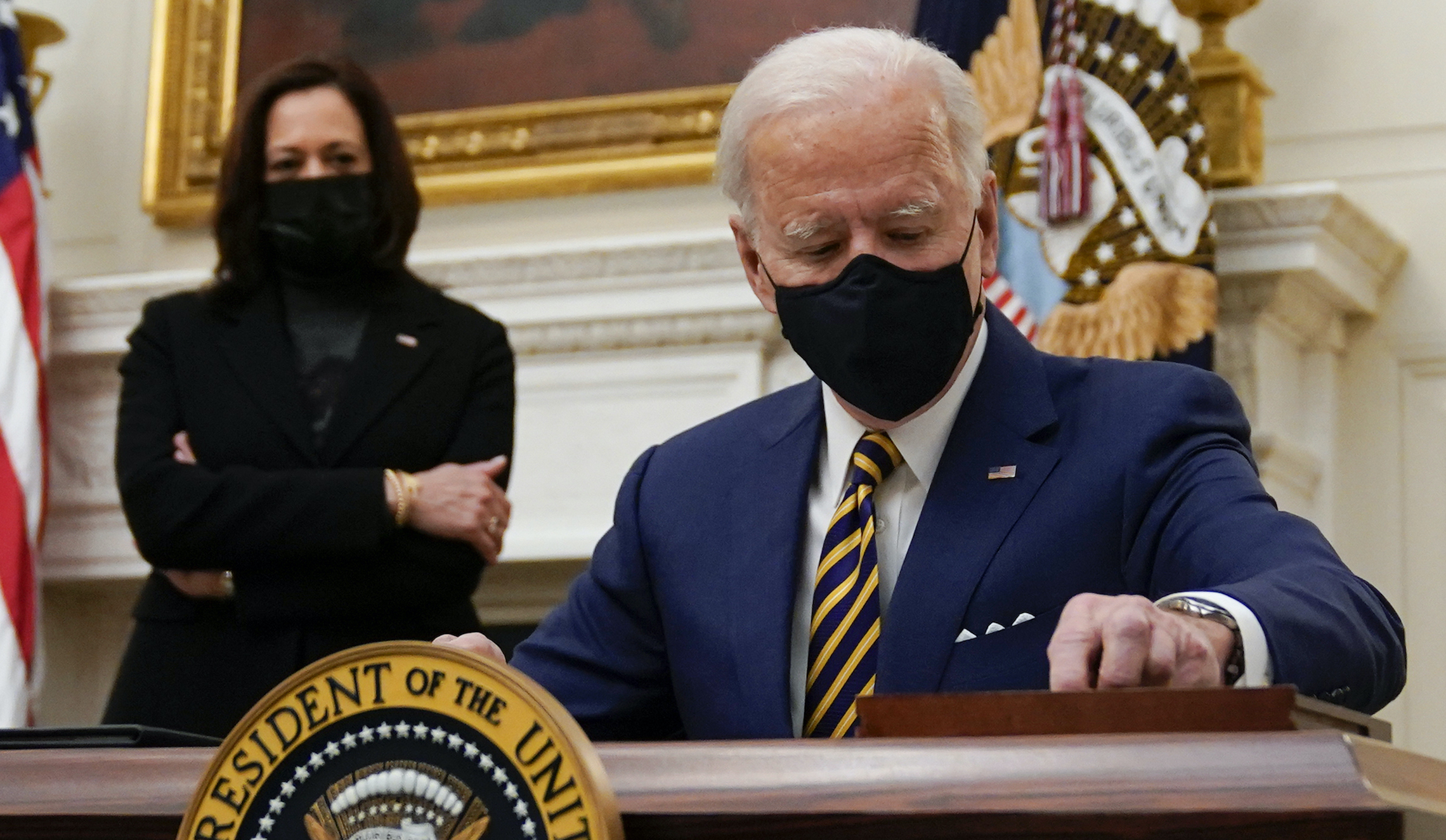The banners outside the White House on Inauguration Day proclaimed the arrival of the “Biden-Harris” administration. And since then, they have governed as if physically joined by a hyphen.
They were both in the Oval Office on Friday to receive the president’s daily security briefing together, and then again for an economic briefing with Janet Yellen, the newly installed secretary of the Treasury. Lunch together followed in the president’s private dining room.
Their close relationship strikes a stark contrast with their immediate predecessors, who did not speak for five days this month when an already strained relationship stretched to a breaking point after the Capitol violence on Jan. 6.
Presidential scholars said it is clear President Biden saw a different model of how a president and vice president should operate, even if it might not survive four years.
“It won’t last,” said presidential historian Craig Shirley. “It never does. The vice president always has their own political ax to grind.”
For now, the two could not be closer. Vice President Kamla Harris is a constant presence in the president’s photo opportunities around the White House.
She is even living temporarily just across the street. Harris and her husband, the first gentleman Doug Emhoff, are lodging at Blair House, the president’s guest residence on Pennsylvania Avenue, while her vice presidential home at the U.S. Naval Observatory is freshened up.

Its last occupant, Vice President Mike Pence, frequently found himself blindsided by his boss. In the final weeks of his time in office, reports circulated about the extreme methods he used to ensure he remained in the loop on key issues.
He would visit the West Wing each morning to find out when the president was expected and then loiter around the Oval Office to ensure that he did not miss out on crucial meetings even though he was rarely invited, according to the New York Times.
Their relationship was an example of Trump’s unconventional take on the presidency. He would rather phone friends and business acquaintances for discussions than schedule meetings as part of the policy formation process.
Professor of political science at Northeastern University Costas Panagopoulos said Biden saw a more central role for his vice president, like the one he developed under President Barack Obama.
“It is clear President Biden views Vice President Harris as a close partner in governing,” he said. “It appears he is modeling his partnership after his own role in the Obama administration, but he also brings to the relationship his own perspective having served as vice president for eight years.”

Biden and Harris had a rocky relationship during the Democratic nomination race. Their rivalry exploded into view during a 2019 televised debate when she attacked him for his opposition to busing to desegregate schools in the 1970s.
But now he says they are “simpatico.”
Or, as Harris put it in a joint interview with CNN in December: “We are full partners … the president-elect has been, since the first day he asked me to join him on the ticket, very clear with me that he wants me to be the first and the last in the room.”
This week she has taken a lead role in pushing the administration’s COVID-19 relief bill. She conducted interviews for TV stations in Arizona and West Virginia, home to Sen. Kyrsten Sinema and Sen. Joe Manchin, respectively, who are likely to be two key votes when the bill reaches the Senate.
So far, she has not been dealt any specific portfolios, suggesting she will work across a range of priorities.
But, as Shirley put it, there is only ever one priority for a vice president.
“They all want the top job,” he said. “They watch stories about the president’s health and go to funerals. That’s what they do.”

